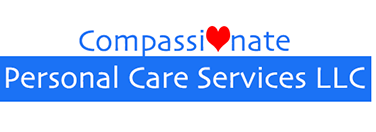Promoting Safety in Personal Care: Protocols and Procedures Every Worker Should Know
Ensuring safety in personal care is paramount for protecting both clients and caregivers. Personal care workers, including caregivers, home health aides, and nurses, are on the front lines of providing care, often in environments where safety risks can be present. Adhering to established protocols and procedures helps prevent accidents, reduce hazards, and ensure a safe and supportive environment. Here’s a comprehensive guide to essential safety protocols and procedures every personal care worker should know.
1. Infection Control and Hygiene
Protocols:
- Hand Hygiene: Wash hands thoroughly with soap and water or use hand sanitizer before and after providing care, handling medications, or touching potentially contaminated surfaces.
- Personal Protective Equipment (PPE): Use appropriate PPE, such as gloves, masks, and gowns, especially when dealing with bodily fluids or potentially infectious materials.
- Disinfection: Regularly clean and disinfect surfaces, equipment, and frequently touched areas to minimize the risk of infection.
Procedures:
- Follow Guidelines: Adhere to the infection control guidelines provided by your organization and health authorities.
- Training: Participate in ongoing training on infection control practices and stay updated on any changes in protocols.
2. Safe Patient Handling
Protocols:
- Use Assistive Devices: Employ equipment like lifts, slide sheets, and transfer belts to assist with moving and repositioning clients, reducing the risk of injury to both the caregiver and the client.
- Proper Techniques: Use correct body mechanics, such as bending your knees and keeping your back straight, when lifting or transferring clients.
Procedures:
- Assess Client Needs: Evaluate each client’s mobility and transfer requirements before performing any tasks.
- Communicate: Clearly communicate with clients about movements and procedures to ensure they are comfortable and prepared.
3. Medication Management
Protocols:
- Accurate Administration: Administer medications according to the prescribed dosages and schedules. Verify the medication and client identity before administration.
- Documentation: Record all medication administrations accurately in the client’s records.
Procedures:
- Follow Instructions: Adhere to the medication administration instructions provided by healthcare professionals.
- Monitor Reactions: Observe clients for any adverse reactions or side effects and report them promptly.
4. Emergency Preparedness
Protocols:
- Emergency Plans: Familiarize yourself with emergency procedures, including evacuation plans, fire drills, and protocols for handling medical emergencies.
- Emergency Contacts: Keep a list of emergency contacts, including medical professionals, family members, and local emergency services.
Procedures:
- Regular Drills: Participate in regular emergency drills to practice and reinforce emergency procedures.
- First Aid Training: Obtain certification in first aid and CPR, and keep your skills up-to-date.
5. Client Safety and Fall Prevention
Protocols:
- Home Safety: Ensure the client’s living environment is free of tripping hazards. Remove clutter, secure rugs, and install grab bars where necessary.
- Mobility Aids: Ensure that any mobility aids, such as walkers or canes, are properly maintained and used correctly.
Procedures:
- Assess Risks: Conduct regular safety assessments of the client’s environment and mobility needs.
- Educate Clients: Provide education on fall prevention and safe practices for moving around their home.
6. Confidentiality and Privacy
Protocols:
- Protect Information: Safeguard clients’ personal and medical information in accordance with privacy laws and regulations.
- Secure Records: Store records and documentation securely and restrict access to authorized personnel only.
Procedures:
- Training: Complete training on confidentiality and data protection practices.
- Follow Policies: Adhere to your organization’s policies regarding the handling and sharing of client information.
7. Communication and Documentation
Protocols:
- Clear Communication: Maintain open and clear communication with clients, their families, and other healthcare professionals.
- Accurate Documentation: Document all care activities, observations, and any incidents accurately and promptly.
Procedures:
- Regular Updates: Provide regular updates to clients and their families about care plans and any changes in health status.
- Review Documentation: Regularly review and update client records to ensure accuracy and completeness.
8. Mental Health and Well-Being
Protocols:
- Stress Management: Recognize the signs of stress and burnout. Implement strategies to manage stress and seek support when needed.
- Work-Life Balance: Maintain a healthy work-life balance to prevent exhaustion and ensure you are providing the best care possible.
Procedures:
- Self-Care: Incorporate self-care practices into your routine, such as regular exercise, relaxation techniques, and time off.
- Seek Support: Utilize available resources, such as counseling services or support groups, to address mental health concerns.
9. Client Rights and Dignity
Protocols:
- Respect and Privacy: Respect clients’ rights, preferences, and privacy. Ensure that care is provided in a manner that maintains their dignity.
- Informed Consent: Obtain informed consent before performing any procedures or treatments.
Procedures:
- Client-Centered Care: Involve clients in their care decisions and respect their choices and preferences.
- Address Concerns: Listen to and address any concerns or complaints from clients regarding their care.
10. Regular Training and Continuing Education
Protocols:
- Ongoing Learning: Engage in continuous education and training to stay updated on best practices, new technologies, and safety protocols.
- Certification: Maintain necessary certifications and licenses relevant to your role.
Procedures:
- Participate in Training: Attend workshops, seminars, and training sessions regularly to enhance your skills and knowledge.
- Stay Current: Keep abreast of changes in industry standards and regulations to ensure compliance and best practices.
Conclusion
Promoting safety in personal care is essential for delivering high-quality and effective care. By adhering to established protocols and procedures, personal care workers can minimize risks, enhance client well-being, and ensure a safe working environment. Continuous education, effective communication, and a commitment to best practices are key components in maintaining safety and providing exceptional care. Prioritize these safety measures to support both your clients and yourself, ensuring a positive and secure care experience for all.




